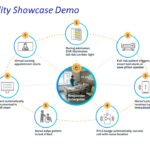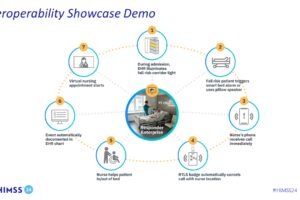While this trend hasn’t gotten as much attention as one might expect, US healthcare organizations are reaching a new level of AI acceptance. In fact, if a recent Optum survey is any indication, the vast majority of healthcare players have AI strategies in place.
According to the study, 85% of respondents reported having an AI strategy in place and 48% have implemented their strategies. Healthcare AI is hard at work within provider organizations, serving purposes such as automating medical image analyses, tracking patient health status, and guiding remote monitoring.
Vendors like Nuance are putting together technologies needed for ambient clinical intelligence, an AI-based application that creates medical documentation on the fly by “listening” to physician conversations with patients.
These tools are likely to have a powerful effect on the process of patient care going forward. However, it’s not clear that the clinicians who must use these tools are completely prepared to do so.
It’s worth taking a look at how far along we are in the process of training clinicians to use these tools effectively. We wouldn’t want to get so swept up rolling out clinical AI we that forget to ask if providers feel they getting the training they need, particularly with COVID eating up providers’ bandwidth so voraciously.
To put things in perspective, let’s think about how quickly AI has emerged as a force in health IT. Over the last two to three years, healthcare AI tech has gone from a nifty idea to a feature of virtually every major system providers use. This represents a fairly rapid shift given the pace at which health IT adoption usually moves.
One key example of this shift can be seen within EHRs. Over the last few years, it’s become common for EHR platforms to include AI tools that predict the course of patients’ conditions and allow for earlier and more effective interventions. This includes features that have been hacked to track COVID patients, in Epic’s case drawn from a tool it calls the deterioration index. Hospitals are still figuring out how these tools should fit into their overall EHR feature set, though.
We’ve also seen rapid growth in the use of AI to effectively interpret medical images. For example, according to research published recently in The Lancet, AI has shown excellent accuracy, sensitivity, and specificity for the detection of small radiographic abnormalities. However, the researchers note that these tools may not be equipped to identify the type and biological aggressiveness of a lesion.
I could go on, but the overall theme would remain the same. It seems as though providers may be relying increasingly on AI analytics before it’s well understood what the limits of these technologies are.
As we move into the third year of COVID’s ascendancy, clinicians remain under great pressure to work more efficiently and discover new ways to improve patient outcomes. There’s no reason why the use of healthcare AI technologies can’t play a role in meeting these demands.
That being said, it would certainly be better if clinicians had a cooling-off period in which they could stop and catch up on where AI is headed and how well it’s doing the jobs at hand. Seldom have they been thrown into the deep end of the pool so quickly with such a potent technology.













